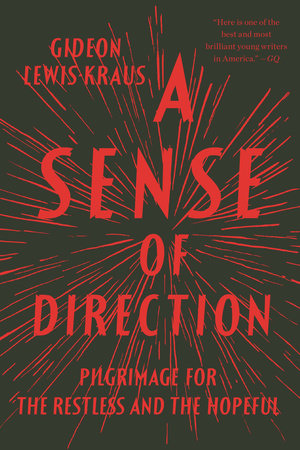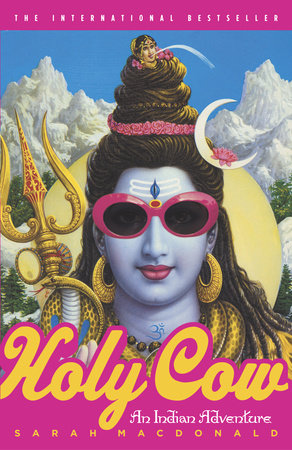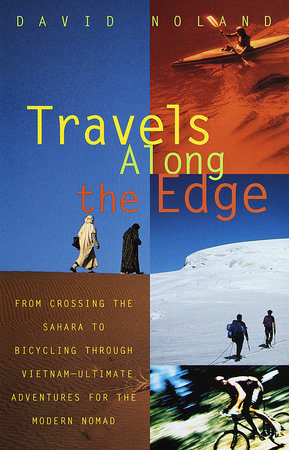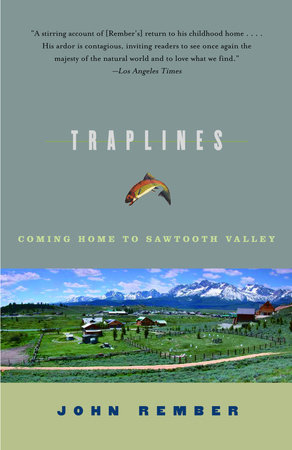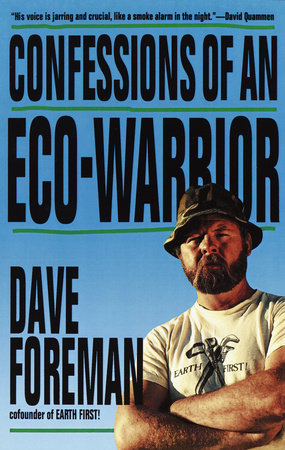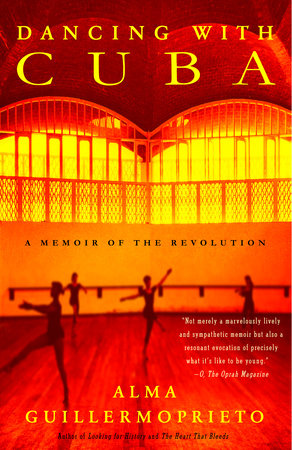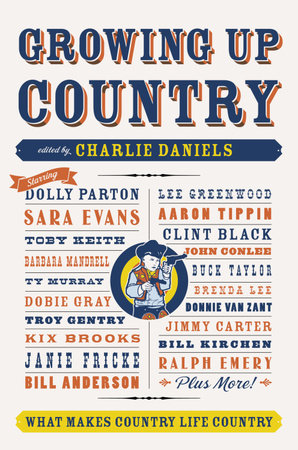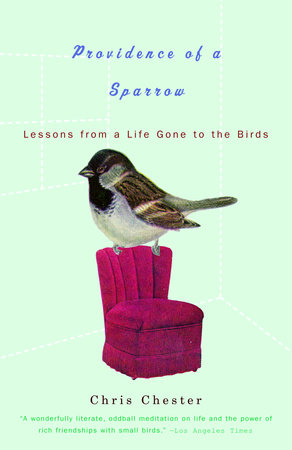Q: When did you first read Zen and the Art o f Moto rcycle Maintenance?
A: I started reading it as a teenager in the late ’70s, which would have been just a few years after it came out – my aunt had a copy and I thought it would be about motorcycles. I only got about 50 pages in before I gave it up. I think a lot of people have started to read it, but never finished it. It can get quite heavy in places.
Q: You mention that it took you three rounds of reading Zen and the Art to really enjoy and “get” it, and this was when you were 40 and a father. Why do you think this is?
A: The first time, I wanted to read about motorcycles and discovered fairly quickly that it wasn’t really about motorcycles – it just used a motorcycle trip as a framework for its philosophical treatise. The second time was in university 10 years later when I got about half-way through, reading it for its philosophy and trying to follow every nuance of rhetoric and not really succeeding. The third time was on a family vacation in the summer of 2003 and I picked it up because I just wanted a book to read. This time, I didn’t really try too hard to follow its philosophy and just skipped over theheavy bits. I finished reading it on my 41st birthday, lying in a hammock beside a lake. When I got to the end, I immediately started reading it again from the beginning, not skipping over anything, and enjoyed it immensely. It wasn’t such a dense read because I’d already laid the groundwork for what to expect. And as a husband and father who was dissatisfied with the chaos of family life, I found it to be a refreshing and gratifying read.
Q: There are many other people who have followed the route from Minneapolis to San Francisco which Robert Pirsig took in Zen and the Art. They even have a special name: Pirsig Pilgrims. Are you the first person to record the journey this way? And where did the idea for this book come from?
A: The people who follow this route all do so for very personal reasons. I’m no exception. Before I set out, I’d hoped there may be a book at the end of it and so I kept detailed notes, but first and foremost, I made the road trip because I hoped it would help in some way to redirect my life into a more interesting direction. As well, I had wanderlust after years of not traveling while raising a young family, and I just wanted to get away for a while, as I’d done 19 years before on essentially the same motorcycle. Lying in that hammock on my 41st birthday – a small moment of peace in the tumult of a family vacation – the prospect of a long, solitary motorcycle road trip seemed fabulous.Others have written about their trip – there are some websites that include journal entries in a number of different languages, but I don’t know of any books actually being written.
Q: In ZEN AND NOW, you list all the items you’re traveling with, including your laptop. Did you use it much? Pirsig was interested in how our culture relates to technology, but he was writing in a mechanical age. Does Zen and the Art have anything to teach us about computer technology and mobile communications—digital technologies which were not much a part of the world Pirsig is writing about?
A: I turned on my laptop every evening, but most nights found that all I did was download photos from my camera. More often than not there was no Internet connection at the cheaper places where I was staying. I also took a Palm Pilot that I never used, and a cell phone that never worked. They just all took a back seat to the basic mechanics of traveling. The irony is that it turned out to be very similar to Robert Pirsig’s trip – I wrote postcards and relied on payphones – but if Pirsig were traveling now, he’d have taken a far better computer and relied on it much more. He was a computer geek before the term was coined, and one of the lessons of Zen and the Art is that we could spare ourselves much of the confusion and frustration caused by technology by understanding it better and learning how to use it properly.
Q: The trip described in Zen and the Art originally happened in 1968. Yet, in 2008, it’s striking that you encountered a similar level of friendliness and hospitality on your trek that Robert Pirsig did on his. How do you explain this?
A: People don’t change that quickly, and the values of the American Midwest are as strong today as they were 40 years ago. As well, I was riding a motorcycle and that’s about the best icebreaker there is on a journey. Not everyone approves, but if you’re polite and respectful of others, most will go out of their way to assist a traveler.
Q: You have a few mechanical and logistical problems along the way with your motorcycle, Jackie New, like a leaky seal and broken GPS. Mechanically, what was your biggest obstacle along the way?
A: Actually, the biggest mechanical obstacle was myself. I have a good understanding of engines but I’m not a good mechanic – I tend to be clumsy and impatient, completely the opposite of Robert Pirsig and the lessons he passes on in Zen and the Art. I packed the wrong service manual and I forgot some important tools that I really needed, but the old bike got me to San Francisco in one piece. I had to take a few days there to replace her clutch, brakes, tires and suspension, but by then I was relaxed and methodical and did a much better job of the preparations so I could get home again.
Q: It seems almost uncanny that throughout your trip you stumbled upon “characters” who would be right at home on the pages of Zen and the Art. You meet Lilli at the Tom Tom Motor Inn, who puts pride into maintaining a cleaner and cheaper hotel than the chains, and a precocious boy named Landon Cheatham, who advises you to drive along the coast, which is too beautiful to miss. Do you think your eyes were open to people who embodied the ideals of Pirsig?
A: I was rereading Zen and the Art as I travelled west, so I was more than usually aware of Robert Pirsig’s ideals, but on a motorcycle, your eyes are always more open to everything, good and bad.
Q: Although you’re a motorcycle enthusiast, you do acknowledge the danger associated with it. It might seem improbable these days that a father taking his son out on a machine with such a reputation would be the basis for a bestselling book. Do you think the attitude toward motorcycles has changed since Pirsig took his son on their journey? If so, why?
A: I do acknowledge that there’s an intrinsic danger in riding motorcycles, but there’s also a danger in driving cars, or working a chainsaw, or chopping carrots. In the wrong hands and under the wrong circumstances, motorcycles can be horribly dangerous machines, but they become exponentially safer with education, experience and the right attitude. I honestly believe that I’m safer on my motorcycle than I am in my car, and that’s mostly because I’m far more aware of my surroundings on a bike; I’m not distracted by the radio, or by drinking coffee. As for the attitude of others toward motorcycles, these days oftentimes they’re expensive luxury items, ridden by retirees with time and money on their hands, so they’ve become far more respectable. Which is ironic, really, since these people often buy them specifically because they want to buck respectability, if only for a Sunday afternoon ride.
Q: You did a lot of research and reporting on Robert Pirsig’s life before and after Zen and the Art. Did you learn anything about him that gave you more insight into his philosophy?
A: I learned a lot about him, including that he is a man who has faced many challenges in his life, and grown to overcome them. He lost his mind; his marriage collapsed; his son was murdered. He’s far from perfect, yet he’s essentially a good man who diagnosed and wrote beautifully about the root causes of society’s overall dissatisfaction. And although he achieved both fame and fortune, he didn’t really want either. He just wanted – still wants – to be understood.
Q: Robert Pirsig is famously reclusive, and yet ZEN AND NOW contains a great deal of fascinating biographical information. Did he co-operate with your research?
A: Yes and no. I wrote to him a number of times and he always replied promptly and courteously, though never at any length. He read two early manuscripts and commented on them briefly. Toward the end, when I was asking some tough questions, he was clearly fed up with the whole thing and provided only minimal answers intended to shut me off. I don’t blame him – he’s spent the last three decades being hounded by people and he just wants his book to stand on its own. As recently as last year, he had to call the police to forcibly remove a stalker who’d come over from Europe to find him. He asked me to be careful in my book to not reveal details that would help such people, and I was happy to comply with that.
Q: Have you ever met Robert Pirsig?
A: No, though I still hope to one day, if only to shake his hand and thank him for his inspiration. At the very beginning, he wrote to me that “the best place to meet an author is on the pages of his book,” and he’s probably right. But he may change his mind about meeting me. When he learned that Knopf was to publish ZEN AND NOW, he wrote me a very supportive letter of congratulations and told me that “Zen and the Art also took four years to write … so now you know what it’s like.”& A
Q: You write: “Just as readers who like motorcycles are attracted to Pirsig’s book, so are readers who appreciate Zen. And both sides are often disappointed that Zen and the Art isn’t really about either motorcycles or Zen. But then Pirsig states this clearly up front.” If the book is not about motorcycles or Zen, and it’s inspired generations of Americans, what—in your opinion—is it about?
A: Boiled right down, Pirsig’s book is about recognizing that if a job’s worth doing, it’s worth doing well; don’t rush through things but take the time and effort to consider life and how to improve it for yourself. This philosophy combines elements of Zen principles with the ancient Greek search for betterment, and gives it all a modern context to add relevance to our lives. And when I thought about it and applied it to my own busy life, filled beyond the brim with work and family, I found it’s as relevant now as it was 40 years ago.
Q: In ZEN AND NOW, you’re fixated on reaching San Francisco and the end of the journey on your forty-second birthday. Why was this so important to you?
A: I’d finished reading Zen and the Art on my 41st birthday and promised myself then that I’d celebrate my next birthday in San Francisco, at the end of this road trip. I really needed to know that I could still achieve something, which everyone I knew interpreted as being a midlife crisis. Then shortly before leaving on the journey, I’d stumbled upon Douglas Adams’ Hitchhikers Guide to the Galaxy, which I’d read years before and forgotten about. In that book, it was claimed that the number 42 was the meaning of life, so it all kind of seemed fitting that reaching my goal in San Francisco on the day I turned 42 would show me the meaning of life. And when I told people this, they knew it was a midlife crisis.
Q: The trip you take in ZEN AND NOW seems to coincide with some of your own reflective thoughts on being a husband and a father. How has your world changed, if at all, since you wrote the book?
A: Most things haven’t changed that much, although I think I’m a more careful mechanic now. I’m still busy at work and home – too busy, really – and always appreciate everything I have; I lived and worked as an aid worker in Africa for a while, and that was the real life-changing experience that taught me to value everything around me. The major change, though, is that I shook off the discontent that I’d blamed on my wife and children for tying me down and restricting my ambitions; this journey helped me to recognize that my various anxieties were really more of my own making, and I’m now more satisfied with being a husband and father. In fact, it gives me a great deal of satisfaction that just wasn’t there before.
Q: You’re a motorcycle and auto editor and writer for the To ro nto Sta r. What’s next for you now?
A: I still love taking motorcycle trips, both short ones and long ones, and there are more of those planned. I’ve put Jackie New, my dirt bike from ZEN AND NOW, into semi-retirement and bought a Harley-Davidson Low Rider, which is considerably more comfortable but still fun to ride. I bought a cruiser mostly because I want to start travelling with one or the other of my sons, and I don’t want to rush an experience like that. My eldest son, Andrew, is now 11 years old, the same age as Chris Pirsig in Zen and the Art, and we have a week-long trip on the bike to New York City planned for this summer. Then next summer, in 2009, Andrew and I want to ride to Los Angeles – I want to show him the prairie and the desert and the mountains, which he’s never seen, and share the moments with him. Perhaps there’ll be a second book in that trip.
Q: If you had to pick one favorite moment or experience from your trip, what would it be?
A: When you read ZEN AND NOW, you see that each day of the journey has high points and low points – it was never boring. But if I choose just one moment, it would be reaching Hwy 101 in California, just after crossing the state line from Oregon. It was the closing of a circle for me: 19 years before, I’d ridden my dirt bike on a giant loop from home that had taken me all the way to Alaska, and then I’d headed south all the way to San Diego and into Mexico. That was the trip I’d remembered so fondly while lying in the hammock, and that was what I’d wanted to prove to myself could be repeated. When I reached Hwy. 101 a few miles east of Crescent City, probably 5 minutes before finally seeing the Pacific Ocean, I was closing the circle and back on the old road of my youth. As well, I was just a day away from reaching my goal on that overloaded old dirt bike and it all finally seemed possible. I didn’t know, of course, what would happen to me in the California redwoods the next day.











